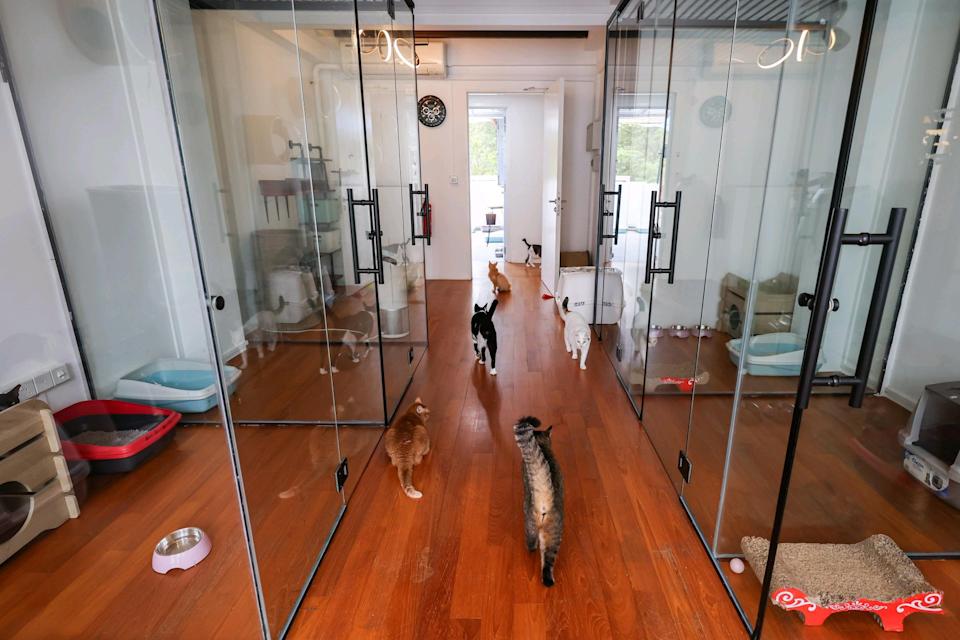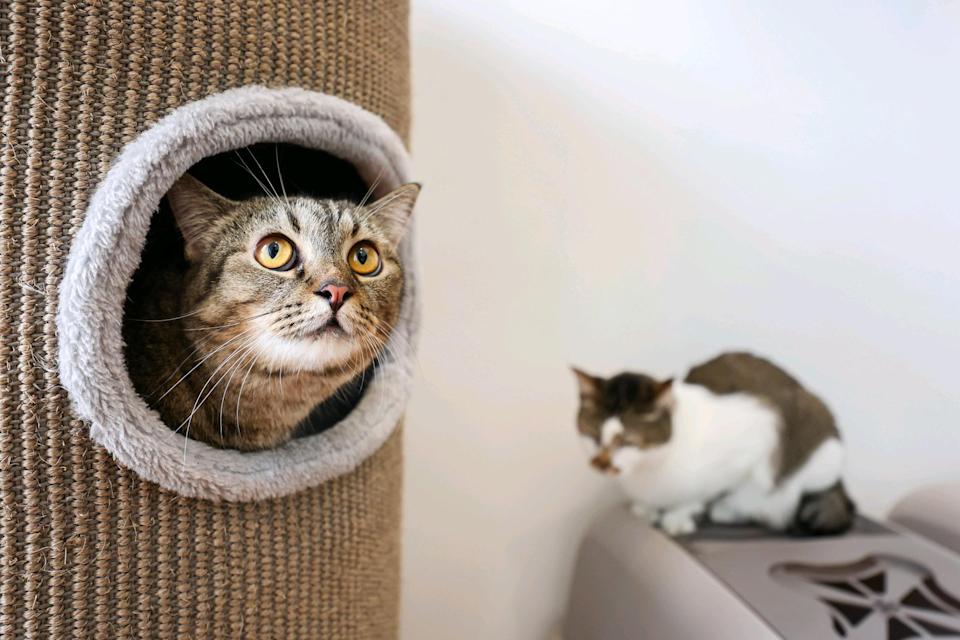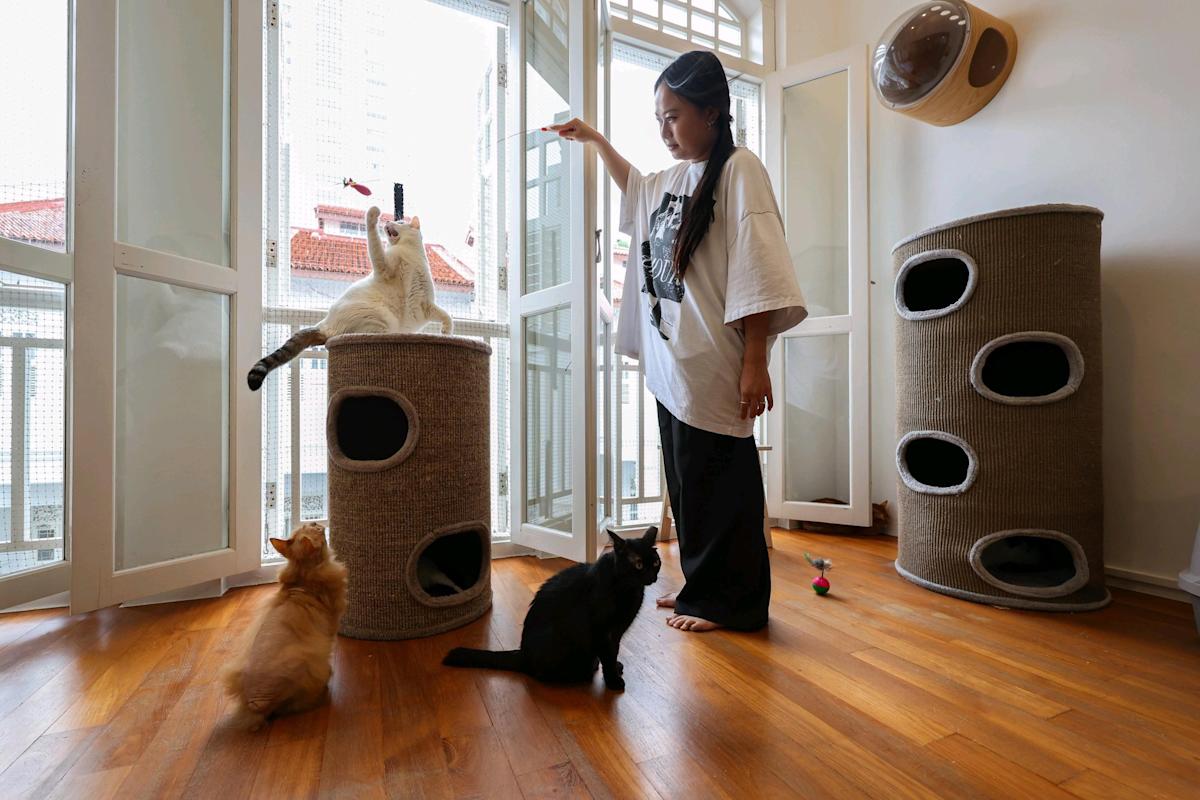SINGAPORE – Ms Eva Helina Irman runs Little Katpaws, a cat shelter on the second floor of a shophouse in Aliwal Street.
The cat sanctuary, about 2,000 sq ft, is designed like a home for felines to roam freely.
This is to help the rescued cats “acclimate to human homes should they get adopted”, said Ms Eva, 28, who is the operations manager.
Little Katpaws was started by her 48-year-old mother Katrina Shamsudin in 2016.
“It was a small place located at Ming Arcade in Cuscaden Road. We had only 10 cats then,” Ms Eva told The Straits Times.
“I was 13 when I pestered her into fostering some cats. Eventually, it became her pet project,” Ms Eva said of her mother.
“We moved to a much bigger place in North Bridge Road in 2020 and at one point, we even helped rescue 40 cats from a hoarder. We managed to find homes for 25 of them. A few of those cats are still with us,” she added.
Her mother used to run a boarding place for cats but called it quits after “some owners stopped paying for the food and board, or simply became uncontactable when it was time for the cats to go home”, according to Ms Eva, who previously worked for charities.
“The boarding provided income for the sanctuary. With that gone, we depend on donations from kind people and that makes up 30 per cent of our expenditure. The rest comes from our own pockets,” she said.

The largest portion of the expenses goes to veterinary care and food. On some months, the donations dipped so low that almost 90 per cent of the costs came out of their own pockets.
Today, Little Katpaws houses a total of 30 cats. Ms Eva has capped the number at 40 to prevent overcrowding.
She has also installed created rooms with glass doors to separate cats infected with feline immunodeficiency virus (FIV) or feline leukaemia virus (FeLV) so that the healthy ones are protected.
FIV attacks a cat’s immune system, leaving it vulnerable to infections. FeLV is a form of leukaemia that causes a variety of diseases as it invades cells in the immune system and blood-forming tissues.
Segregating the sick kitties “does not mean these cats do not get sun and exercise”, Ms Eva said.


They are let out at different times of the day to roam some of the other rooms, which would be thoroughly cleaned after use.
“Cat shelters need to prioritise the well-being of their feline residents. Therefore, they need to provide adequate space, safe and clean environments, and proper healthcare,” she added.
Currently, there are no common set of national guidelines to help shelters adopt best practices across the board.
Ms Eva relies on what she has learnt online and through experiences to ensure her feline residents are “happy, healthy and ready to be adopted”.
“Only when the new regulations come out will we see how we can tweak our current practices to ensure we toe the line,” she said.
Source: The Straits Times © SPH Media Limited. Permission required for reproduction
Discover how to enjoy other premium articles here
